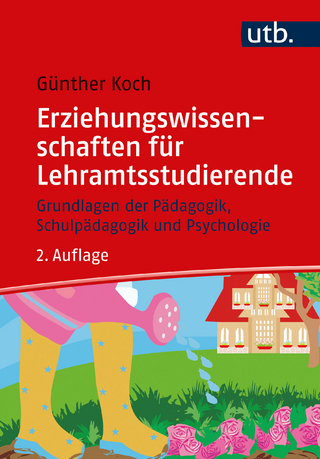
Expanding Environmental Awareness in Education Through the Arts
Springer Verlag, Singapore
978-981-19-4857-2 (ISBN)
The chapters of this book give examples of artists' and crafts people's processes of thinking through materials and with materials, but also their reflections on how more-than-humans (animals and plants) craft from available materials, and how the environment and landscapes re-craft themselves through tedious processes of transformation. These case examples are founded on theauthors' own experiences with phenomena they are trying to understand and critically explore.
This book is of interest to professional creative practitioners, art and craft educators, art teacher educators or researchers in the field of creative practices. It has power to inspire rethinking of present educational practices, to ignite critical reflections about materials and more-than humans, and, hopefully, motivate transformations toward more ecologically sustainable ways of life.
Chapters "Crafting in Dialogue with the Material Environment" and "Soil Laboratory: Crafting Experiments in an Exhibition Setting" are available open access under a Creative Commons Attribution 4.0 International License via link.springer.com.se via link.springer.com.
Biljana C. Fredriksen is a professor of Art & Craft education and teacher educator at early childhood teacher programs at University of South-Eastern Norway. During her 25 years long teaching practice, she has conducted a number of research projects in collaboration with her students, young children, and early childhood practitioners. Her most recent studies address embodied, experiential and aesthetic entanglements among more-than-humans. Striving for practice based on an idea of evolutionary aesthetics, Fredriksen’s research deals with ecologically holistic understanding of learning where she poses questions about how esthetic approaches to learning can contribute to increased ecological awareness in students of all ages. She is leading the research group Learning and Teaching for Sustainability (LETS), and she is her university’s representative in the International Partner Network of the UNESCO Chair on Education for Sustainable Lifestyles. Fredriksen’s most recent publications are based on her co-existence with horses and alpacas, and her own process of becoming ecological through close encounters with more-than-human inhabitants of their rural farm landscapes. Camilla Groth is a craft practitioner, researcher and teacher with a Master from Royal College of Art, London and a Doctor of Arts degree from Aalto University, Helsinki. She has a background in ceramic crafts and many years’ experience of studying, teaching and working in the field of art, design and craft, in Europe and Japan. Her creative work has been exhibited in Tokyo, London, Paris, New York and Helsinki and has been acquired by the Finnish state art commission. Her research interests concern experiential knowledge and materiality. Groth has studied embodied making and learning in craft practice and in her recent work also in interdisciplinary collaboration. She has developed an interdisciplinary educational platform for material thinking and learning that encourages reflection on the student’s relationship with materials. In her role as associate professor at the University of South-Eastern Norway, Groth is leading the research group Embodied Making and Learning, in which the aim is to develop knowledge related to embodied making practices, its role for both individuals and the society and the learning that goes on in these human-material interactions.
Part 1: Theoretical Perspectives and Human Crafting.-Chapter 1. Introduction (Camilla Groth et al.).- Chapter 2. Eco/multi-centric Approaches to Aesthetic Learning Processes (Helene Illeris et al.).- Chapter 3. Kinship Assemblages: Human and Nonhuman Dialogues through Materiality (Miranda Smitheram et al.).-Chapter 4. Slow Spun: Deep Learning and Teaching with Wool (Lorrie Miller et al.).- Chapter 5. Entangling with Materials: Crafting as a Way of Relating to the World (Bilge Merve Aktaş).- Chapter 6. Crafting in Dialogue with Soil (Maarit Mäkelä).-Chapter 7. Crafting in Dialogue with the Material Environment.- Part 2: More-than-human crafting.- Chapter 8. Three Contemporary Artists’ Collaborative Crafting-with Non-human Living Organisms (Jing Yang et al.).- Chapter 9. Managing Conflicting Desires in a Garden Plant: Crafting-with a Variegated Daylily (Tina Westerlund et al.). Chapter 10. Birds’ Building Masters (Venke Aure etal.).- Chapter 11. Insectography: A Choreographic Crafting of Insects and us (Tone Pernille Østern et al.).- Chapter 12. Desire Lines as Artographic Crafting: Learning-with Wildlife in Rural Canadian Landscapes (Anita Sinner).- Chapter 13. Locating the Hunter: A Tale of Toys, Tigers and Trophies (Koumudi Patil). Part 3: Crafting with environment.- Chapter 14. Soil Laboratory: Crafting Experiments in an Exhibition Setting.- Chapter 15. The Many Lives of a Tree: Speculative Fiction on Environmental Reshaping Processes and its Discursive Symptoms (Ana Sarvanovic et al.).- Chapter 16. Listening to a Magmatic rock: Volatility of More-than-human Agency when Crafting-with Larvikite (Biljana C. Fredriksen et al.).- Chapter 17. Wind as a Crafting Agent? (Alison Clark).- Chapter 18. Landless Like the Wind (Elly Yazdanpanah).- Chapter 19. Soil Matters: Merging Field, Laboratory and Gallery to Explore the Materiality of Soil (Riikka Latva-Somppi).-Chapter 20. Nurture-by-Nature in Affordance-Need Context (Jun Hu).
| Erscheinungsdatum | 26.11.2023 |
|---|---|
| Reihe/Serie | Landscapes: the Arts, Aesthetics, and Education |
| Zusatzinfo | 82 Illustrations, color; 2 Illustrations, black and white; XV, 240 p. 84 illus., 82 illus. in color. |
| Verlagsort | Singapore |
| Sprache | englisch |
| Maße | 155 x 235 mm |
| Themenwelt | Kunst / Musik / Theater |
| Sozialwissenschaften ► Pädagogik ► Allgemeines / Lexika | |
| Sozialwissenschaften ► Pädagogik ► Bildungstheorie | |
| Sozialwissenschaften ► Pädagogik ► Schulpädagogik / Grundschule | |
| Schlagworte | Becoming ecological • Craft Education and Sustainability • Craft education for the future • Crafting the future • Ecological education in the arts • Ecological Ethics • Environmental awareness in arts education • More-than-human crafting • Post-humanism in education • Sustainable craft education • Sustainable craft pedagogy • Sustainable teaching practices in the arts • Teaching arts and crafts sustainably |
| ISBN-10 | 981-19-4857-7 / 9811948577 |
| ISBN-13 | 978-981-19-4857-2 / 9789811948572 |
| Zustand | Neuware |
| Haben Sie eine Frage zum Produkt? |
aus dem Bereich


